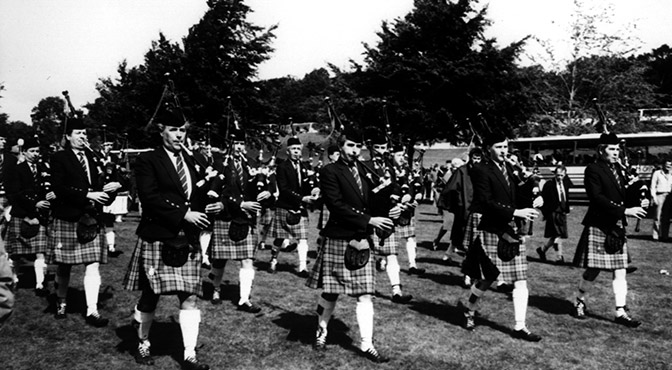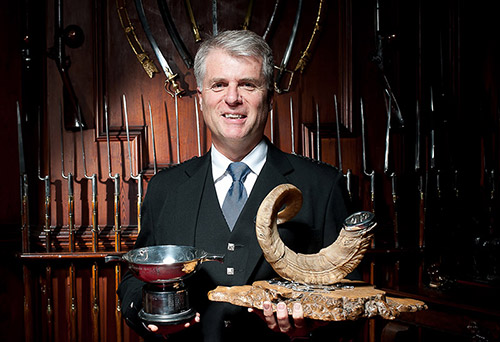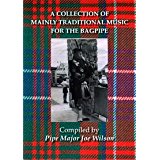
Thanks for all the comments regarding the Glenfiddich competition. I hear that the tuning wasn’t too bad this year and that may have been something to do with the positioning of a clock by which the competitors could perhaps gauge the time spent adjusting the drones.
Only one small step now and we could have lights and a huge improvement in listeners’ enjoyment. In particular, think how the livestream experience would be enhanced if we knew in advance the approximate time of performances.
I’m also told there was a slightly better mix of tunes at Blair; all positive and progressive which is how my comments should always be taken even if it suits some to portray them otherwise. Anyway, here is a fine study of the winner, Jack Lee, issued by the organisers:  And here is a submission about the playing from one of our readers who has asked to remain anonymous but who is a very knowledgeable piper and a highly respected man in his professional life:
And here is a submission about the playing from one of our readers who has asked to remain anonymous but who is a very knowledgeable piper and a highly respected man in his professional life:
‘I sat through the entire contest – the chair I chose looked a bit thinner than others. I managed to last till the end but it could have been better. Some competitors tuned for too long. It was less noticeable in the MSR – where most competitors played a slow air to settle the pipes (which I quite liked) – although one managed a fair amount of three separate slow airs!
‘A noticeable feature of the day was that no tune was played by more than one contestant in the MSR and there were a few seldom heard tunes. Iain K MacDonald played two Donald MacLeod tunes he’d played in Stornoway earlier in the year, neither of which are often heard, The Hills of Kintail and Neil Angus MacDonald (your pupil’s grandfather of course); Callum Beaumont played The Top of Craigvenow and Jack Lee played Drum Major John Seaton. Jack was a deserved winner, his piobaireachd was the outstanding tune in that discipline and he could easily have won the MSR.’
[wds id=”2″]
To the bands now. The picture up top is from the PP archives and goes back over 30 years. It is of the British Caledonian Airways Pipe Band playing at (I think) the Worlds in 1986. The pipe major is Harry McNulty who was formerly P/M at Lothian and Borders Police. Harry had a huge influence on all the pipers in his bands and is very much an unsung hero of the pipe band world – though not to those who know him.
Behind Harry in the picture is P/M Angus MacDonald, Scots Guards, and in the front rank we see Tom Johnstone, President of the Scottish Pipers’ Association and the Scottish Organiser for the Lorient Festival in Brittany. Next to Tom we have Ronnie MacShannon, solo and band judge and Pipe Dreams gaffer, and in the P/Sgt’s position we have Joe Wilson.
Sadly Joe is no longer with us. He worked with me at the College of Piping for ten years and was one of the finest teachers of piping I have ever encountered. He had been taught by James Robertson, Banff (Farewell to the Creeks), a devotee and student of GS McLennan and during Army service Joe had extensive tuition from P/M Donald MacLeod. Joe allied that teaching to his own natural musicality and forensically detailed musical knowledge – to the College’s and everyone else’s benefit. Joe travelled with us on many occasions to our schools in Germany and is still fondly remembered there for his dedication and patience. I am sure there will be students at next month’s Northern Winter School who will remember him.
 Fortunately Joe managed to complete his collection of pipe music before he died (left). It really is worth having and I think it is one of the few bagpipe music collections that accurately displays the tunes as we actually play them. Joe uses double dots and demi-semi quavers (32nd notes) where we use (incorrectly) semiquavers. For example here’s how he portrays the first part of William Rose’s Atholl Highlanders March to Loch Katrine:
Fortunately Joe managed to complete his collection of pipe music before he died (left). It really is worth having and I think it is one of the few bagpipe music collections that accurately displays the tunes as we actually play them. Joe uses double dots and demi-semi quavers (32nd notes) where we use (incorrectly) semiquavers. For example here’s how he portrays the first part of William Rose’s Atholl Highlanders March to Loch Katrine: The book has many fine tunes and different settings which are worth exploring. Buy it here.
The book has many fine tunes and different settings which are worth exploring. Buy it here.
[wds id=”3″]
















Think ian roddick is in the pic too
I find, with great interest, the comment regarding Joe Wilson using double dots (demi-semi quavers) in his music notation. Just recently I have found that utilizing double dots really helps in adding more personal expression to the music, especially within a pipe band. Instead of just “saying” to hold a certain beat/note a tad longer, you add that double dot and it is right there for all to see (and feel). I don’t believe i have ever seen double dots in music notation (pipe music or any other kind).